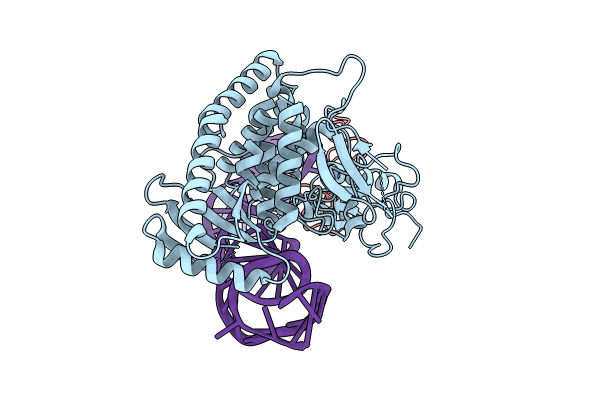
Deposition Date
2023-04-08
Release Date
2024-07-24
Last Version Date
2025-07-02
Entry Detail
PDB ID:
8OPS
Keywords:
Title:
Human terminal uridylyltransferase 7 (TUT7/ZCCHC6) bound with pre-let7g miRNA and Lin28A - complex 1
Biological Source:
Source Organism:
Homo sapiens (Taxon ID: 9606)
Host Organism:
Method Details:
Experimental Method:
Resolution:
3.82 Å
Aggregation State:
PARTICLE
Reconstruction Method:
SINGLE PARTICLE


